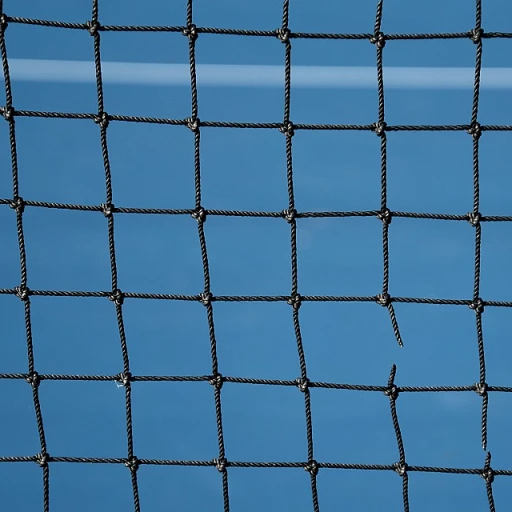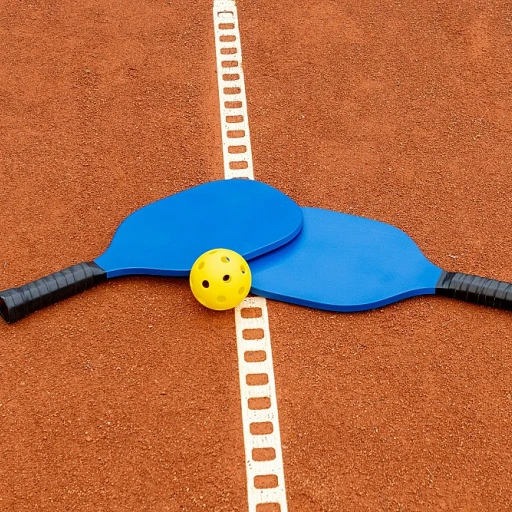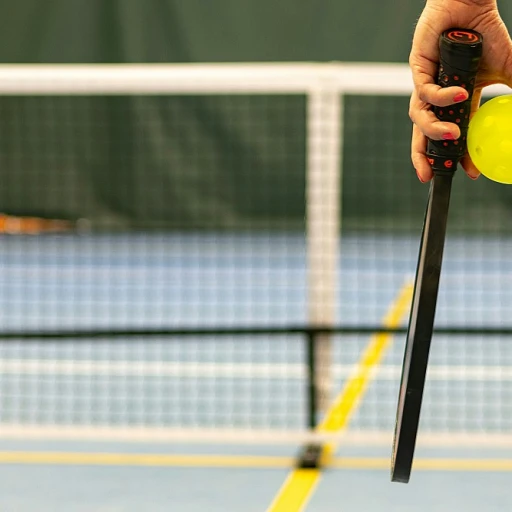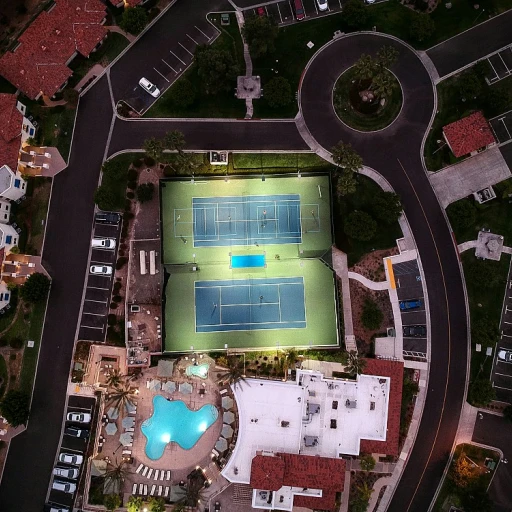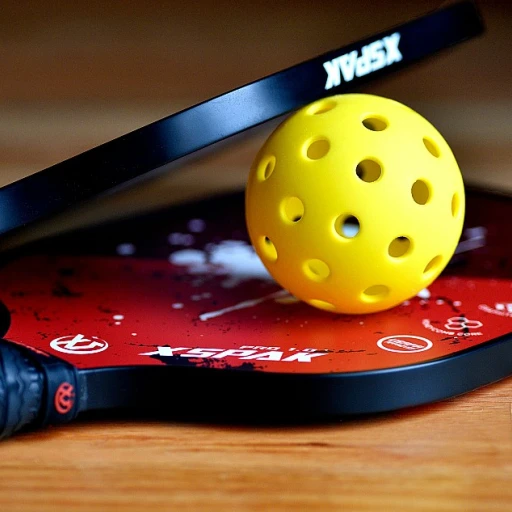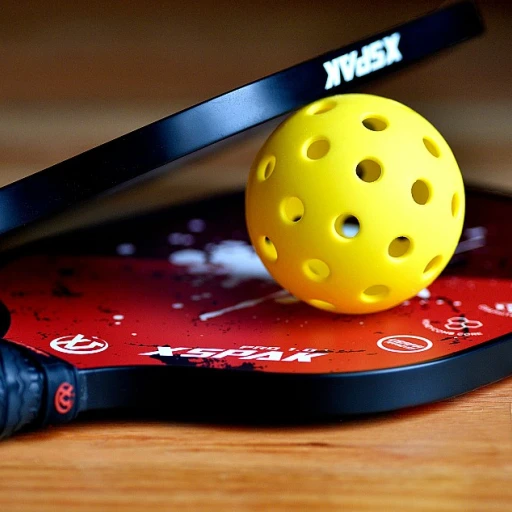
Understanding the importance of grip in pickleball
Why your grip matters on the pickleball court
When you step onto the pickleball court, your grip is one of the most important fundamentals that can shape your entire game. The way you hold your paddle affects your control, power, and ability to add spin to your shots. A solid grip helps you react quickly, switch between forehand and backhand shots, and maintain better paddle control during fast exchanges.
Many players overlook the impact of grip pressure and hand positioning. If your grip is too tight, you lose flexibility in your wrist and risk fatigue. Too loose, and you sacrifice stability and accuracy. Finding the best balance is key for both beginners and experienced players.
- Control: The right grip allows you to direct the ball with precision, whether you’re aiming for the baseline or executing a soft dink.
- Spin: Adjusting your grip can help you generate topspin or slice, making your shots more unpredictable for opponents.
- Strength: A proper grip engages the right muscles in your hand and forearm, giving you the strength needed for powerful drives and quick volleys.
Different grips, such as the continental grip, eastern grip, and western grip, each offer unique advantages for various playing styles and shot types. As you develop your skills, understanding these options will help you adapt your grip for better performance in every situation.
Improving your grip is not just about technique. It’s also about building hand strength and choosing the right paddle and replacement grips for your needs. For more on how grip fundamentals connect to your overall game, check out this guide on mastering the art of shot drilling in pickleball.
Common grip mistakes and how to avoid them
Recognizing and Fixing Grip Errors on the Court
Many pickleball players overlook the impact of their grip on overall performance. A poor grip can limit your paddle control, reduce spin, and even lead to wrist discomfort. Understanding common grip mistakes is essential for developing better control and power in your game.
- Holding the paddle too tightly: Excessive grip pressure makes it harder to adjust quickly for different shots and can cause fatigue. Aim for a relaxed hold, as if you’re shaking hands with the paddle handle. This helps maintain paddle control and allows for more wrist movement, which is key for generating spin and power.
- Incorrect hand placement: Placing your hand too high or too low on the paddle handle affects balance and reach. Your grip should allow your index finger and thumb to wrap comfortably around the handle, giving you better control for both forehand and backhand shots.
- Using the wrong grip for your playing style: Many players stick to a single grip, like the continental grip, for all shots. However, switching between grips—such as eastern, semi-western, or western—can help you adapt to different situations and improve your game. For example, a continental grip is great for volleys and quick exchanges, while an eastern grip offers better spin and control for groundstrokes.
- Neglecting grip maintenance: Over time, paddle grips wear out and lose their tackiness. Using worn or slippery grips can cause your hand to slip during play, reducing accuracy and control. Regularly check your paddle grip and consider replacement grips to maintain optimal performance.
By addressing these common grip mistakes, you’ll set a strong foundation for improving your pickleball grip strength and adapting your technique for various shots. This attention to detail not only helps prevent injuries but also supports a more consistent and effective playing style on the court.
Different types of pickleball grips explained
Exploring the Main Pickleball Grips
Understanding the different types of pickleball grips is essential for players aiming to improve their control, spin, and overall game. The way you hold your paddle can influence your ability to execute various shots, adapt to court situations, and maintain comfort during play. Let’s break down the most common grips used in pickleball and how each one can impact your performance.
- Continental Grip: Often called the "handshake grip," this is a versatile choice for many players. To use the continental grip, imagine shaking hands with the paddle handle. This grip allows for quick transitions between forehand and backhand shots, making it ideal for net play and volleys. It also helps with paddle control and is favored for its adaptability on the court. However, some players may find it less effective for generating topspin.
- Eastern Grip: The eastern grip is popular among those seeking a balance between power and control. To find this grip, place your palm on the paddle face and slide it down to the handle. This position is excellent for forehand shots and offers better control for drives and dinks. The eastern grip is also a good starting point for beginners, as it feels natural and supports a variety of playing styles.
- Western Grip: For players who want to maximize spin, the western grip is a strong option. Rotate your hand further under the paddle handle, similar to a tennis western grip. This grip is best for aggressive topspin shots and high-arching lobs. However, it can make backhand shots and quick exchanges at the net more challenging, so it’s less common among advanced players.
- Semi-Western Grip: The semi-western grip offers a middle ground between the eastern and western grips. It provides a blend of spin and control, allowing for effective topspin while maintaining reasonable backhand capability. Many players use this grip to adapt to different shots and court positions.
Choosing the best grip for your game depends on your playing style, hand size, and the types of shots you want to master. Some players switch grips during a match to optimize their performance for specific situations, such as using a continental grip for volleys and an eastern grip for groundstrokes. Adjusting your grip pressure and experimenting with replacement grips on your paddle handle can also enhance comfort and control.
For those looking to refine their footwork and positioning to complement their grip technique, check out this dynamic guide to footwork and positioning mastery. Combining the right grip with strong movement fundamentals can elevate your pickleball game to the next level.
Exercises to strengthen your grip
Simple Drills to Boost Your Grip Strength
Improving your grip strength is essential for better paddle control, more spin, and consistent shots on the pickleball court. A strong grip helps players maintain the best grip pressure, adapt to different grips like continental, eastern, or western, and switch between forehand and backhand shots with ease. Here are some practical exercises and tips to help you build a stronger grip for your pickleball game:
- Squeeze a Tennis Ball or Stress Ball: Hold a ball in your hand and squeeze it tightly for 5–10 seconds, then release. Repeat 10–15 times for each hand. This simple exercise targets the muscles you use to grip your paddle handle.
- Wrist Curls: Use a light dumbbell or even a can of food. Rest your forearm on a table with your hand hanging off the edge, palm up. Curl your wrist upward, then lower it slowly. Switch to palm down for reverse wrist curls. Aim for 2–3 sets of 10–12 reps per hand.
- Finger Extensions: Place a rubber band around your fingers and thumb. Open your hand against the resistance of the band, then relax. This helps balance grip strength and improves control for different grips, including the semi western and continental grip.
- Grip Trainers: Specialized grip trainers or hand grippers can be used to build strength and endurance. Start with lower resistance and gradually increase as your grip improves.
On-Court Practice for Real-Game Grip Strength
- Shadow Swings: Practice your forehand, backhand, and overhead shots without a ball, focusing on maintaining steady grip pressure and switching between grips. This helps reinforce muscle memory for the eastern grip, continental grip, and western grip.
- Wall Drills: Hit the ball against a wall using different grips. Alternate between forehand and backhand shots, adjusting your grip as needed. This improves both grip strength and adaptability for various playing styles.
Tips for Better Grip Endurance
- Don’t over-tighten your grip. Too much pressure can cause fatigue and reduce paddle control. Aim for a relaxed but secure hold on the paddle handle.
- Switch up your grips during practice to get comfortable with continental eastern, semi western, and other grip styles.
- Consider replacement grips or overgrips for your pickleball paddle. A fresh paddle grip can improve comfort and help you maintain better control during long games.
Building grip strength takes time, but consistent practice will help you achieve better control, more spin, and a stronger overall game on the pickleball court.
Adapting your grip for different shots
Fine-tuning Your Grip for Every Shot
Adapting your grip in pickleball is a skill that can elevate your game and give you better control over your shots. The way you hold your paddle—whether using a continental grip, eastern grip, or western grip—can impact your ability to generate spin, power, and accuracy on the court.- Forehand Drives and Volleys: Many players find the eastern grip or semi-western grip offers the best blend of power and control for forehand shots. This grip allows for a natural wrist motion, helping you add spin and keep the ball low.
- Backhand Shots: For single-handed backhand shots, the continental grip is often preferred. It provides stability and lets you switch quickly between forehand and backhand without changing your hand position too much. If you use a two-handed backhand, adjust your top hand for better paddle control.
- Dinks and Soft Shots: When you need finesse at the net, a lighter grip pressure is key. Using a continental or eastern grip with relaxed fingers helps you absorb pace and place the ball with precision.
- Serves and Overheads: The continental grip is commonly used for serves and overheads, giving you the flexibility to add spin and direct the ball deep into the opponent’s court.
Grip Pressure and Adjustments During Play
Your grip pressure should not remain the same for every shot. For powerful drives, a firmer grip helps transfer strength from your hand to the paddle. For touch shots, loosen your grip to allow more wrist action and better feel. Adjusting grip pressure is a subtle but important part of developing your playing style.Switching Grips for Versatility
Advanced players often switch between the continental, eastern, and semi-western grips during a rally. This allows them to respond quickly to different ball heights and spins. Practicing grip changes off the court can help you make these adjustments instinctively during a game.Matching Grip to Paddle and Handle
The type of paddle handle and replacement grips you use can affect how easily you adapt your grip. A comfortable paddle handle with the right thickness helps you switch grips smoothly and maintain better control. Experiment with different paddle grip sizes and materials to find what works best for your hand and playing style. By learning to adapt your grip for different shots and situations, you’ll gain better control, more spin, and improved consistency in your pickleball game.Choosing the right paddle for your grip
Finding the Paddle That Matches Your Grip and Game
Choosing the right pickleball paddle is essential for maximizing your grip and overall performance on the court. The paddle you select should complement your grip style, hand size, and playing style, helping you achieve better control, spin, and comfort during play.- Paddle Handle Shape and Size: The shape and circumference of the paddle handle play a big role in grip comfort. A handle that's too thick or too thin can cause you to lose control or strain your wrist. Players with smaller hands often prefer a thinner handle for a firmer grip, while those with larger hands may benefit from a thicker handle for better paddle control.
- Grip Material and Replacement Grips: The type of grip material on your paddle can affect grip pressure and sweat absorption. Some paddles come with cushioned grips for added comfort, while others use tackier materials for better hold. Replacement grips or overgrips are available if you need to adjust the feel or thickness of your paddle grip.
- Matching Paddle to Grip Style: If you use a continental grip or eastern grip, look for paddles with a handle length that allows for easy switching between forehand and backhand shots. For players who favor a semi-western or western grip, a slightly longer handle may help with wrist movement and spin generation.
- Weight and Balance: Lighter paddles offer quick maneuverability, which benefits players who rely on fast wrist action and quick grip changes. Heavier paddles can provide more power but may require greater grip strength and can fatigue the hand over long games.




